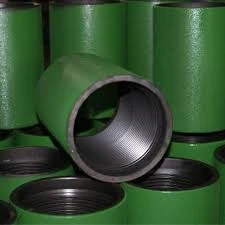- Afrikaans
- Albanian
- Amharic
- Arabic
- Armenian
- Azerbaijani
- Basque
- Belarusian
- Bengali
- Bosnian
- Bulgarian
- Catalan
- Cebuano
- Corsican
- Croatian
- Czech
- Danish
- Dutch
- English
- Esperanto
- Estonian
- Finnish
- French
- Frisian
- Galician
- Georgian
- German
- Greek
- Gujarati
- Haitian Creole
- hausa
- hawaiian
- Hebrew
- Hindi
- Miao
- Hungarian
- Icelandic
- igbo
- Indonesian
- irish
- Italian
- Japanese
- Javanese
- Kannada
- kazakh
- Khmer
- Rwandese
- Korean
- Kurdish
- Kyrgyz
- Lao
- Latin
- Latvian
- Lithuanian
- Luxembourgish
- Macedonian
- Malgashi
- Malay
- Malayalam
- Maltese
- Maori
- Marathi
- Mongolian
- Myanmar
- Nepali
- Norwegian
- Norwegian
- Occitan
- Pashto
- Persian
- Polish
- Portuguese
- Punjabi
- Romanian
- Russian
- Samoan
- Scottish Gaelic
- Serbian
- Sesotho
- Shona
- Sindhi
- Sinhala
- Slovak
- Slovenian
- Somali
- Spanish
- Sundanese
- Swahili
- Swedish
- Tagalog
- Tajik
- Tamil
- Tatar
- Telugu
- Thai
- Turkish
- Turkmen
- Ukrainian
- Urdu
- Uighur
- Uzbek
- Vietnamese
- Welsh
- Bantu
- Yiddish
- Yoruba
- Zulu
perforated pup joints
Understanding Perforated Pup Joints A Key Component in Oil and Gas Drilling
In the oil and gas industry, the efficiency and effectiveness of drilling operations are paramount. Among the myriad of components that facilitate these processes, perforated pup joints play a crucial role. While often overlooked in favor of more prominently discussed elements like drill bits or casing, perforated pup joints are integral to the overall success of drilling activities.
What are Perforated Pup Joints?
Perforated pup joints are short sections of pipe that are equipped with strategically placed openings or perforations. These joints are typically added in a string of casing or tubing to enable fluid flow or to facilitate the introduction of additives and other materials into the wellbore. They can vary in length but are generally shorter than standard pipe sections, hence the term pup. The perforations themselves are designed to allow the passage of fluids while maintaining the mechanical integrity of the joint.
Purpose and Functionality
The primary purpose of perforated pup joints is to enhance the flow of fluids in and out of the wellbore
. During drilling, the ability to efficiently manage the inflow and outflow of drilling mud, cement, and other fluids is critical. For instance, the perforated areas allow for the proper circulation of drilling mud, which helps to cool and lubricate the drill bit, removes cuttings from the borehole, and maintains pressure in the well.perforated pup joints

Additionally, these joints can serve multiple functions depending on the specific needs of a drilling operation. They can be used in conjunction with other equipment to enable stimulation techniques, such as hydraulic fracturing, where fluids are injected into the reservoir at high pressure to enhance oil or gas recovery. Moreover, perforated pup joints can assist in monitoring well pressure and flow rates, providing valuable data that can influence operational decisions.
Material Considerations
When it comes to materials, perforated pup joints are typically manufactured from high-strength steel to withstand the harsh conditions encountered in subsurface environments. The choice of material is critical to ensure that these joints can bear the immense pressures and corrosive nature of the fluids they handle. In some cases, coatings or linings may be applied to enhance corrosion resistance, particularly in environments where aggressive chemicals or brine solutions are present.
Conclusion
Perforated pup joints, though often a footnote in discussions of drilling technology, are indispensable components in the oil and gas sector. They facilitate the critical tasks of fluid management and reservoir stimulation, thereby contributing significantly to the success of drilling operations. As the industry continues to evolve and embrace new technologies, the design and application of perforated pup joints will likely advance as well, ensuring that they remain a vital part of the drilling toolkit. Understanding their function and importance can lead to more efficient drilling practices and better resource management, ultimately benefiting the entire industry.
-
Tubing Pup Joints: Essential Components for Oil and Gas OperationsNewsJul.10,2025
-
Pup Joints: Essential Components for Reliable Drilling OperationsNewsJul.10,2025
-
Pipe Couplings: Connecting Your World EfficientlyNewsJul.10,2025
-
Mastering Oilfield Operations with Quality Tubing and CasingNewsJul.10,2025
-
High-Quality Casing Couplings for Every NeedNewsJul.10,2025
-
Boost Your Drilling Efficiency with Premium Crossover Tools & Seating NipplesNewsJul.10,2025







